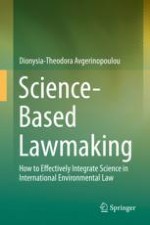2019 | OriginalPaper | Buchkapitel
2. Historical Background: What Are the Lessons Learnt from the Past and What Remains To Be Answered
verfasst von : Dionysia-Theodora Avgerinopoulou
Erschienen in: Science-Based Lawmaking
Aktivieren Sie unsere intelligente Suche, um passende Fachinhalte oder Patente zu finden.
Wählen Sie Textabschnitte aus um mit Künstlicher Intelligenz passenden Patente zu finden. powered by
Markieren Sie Textabschnitte, um KI-gestützt weitere passende Inhalte zu finden. powered by
